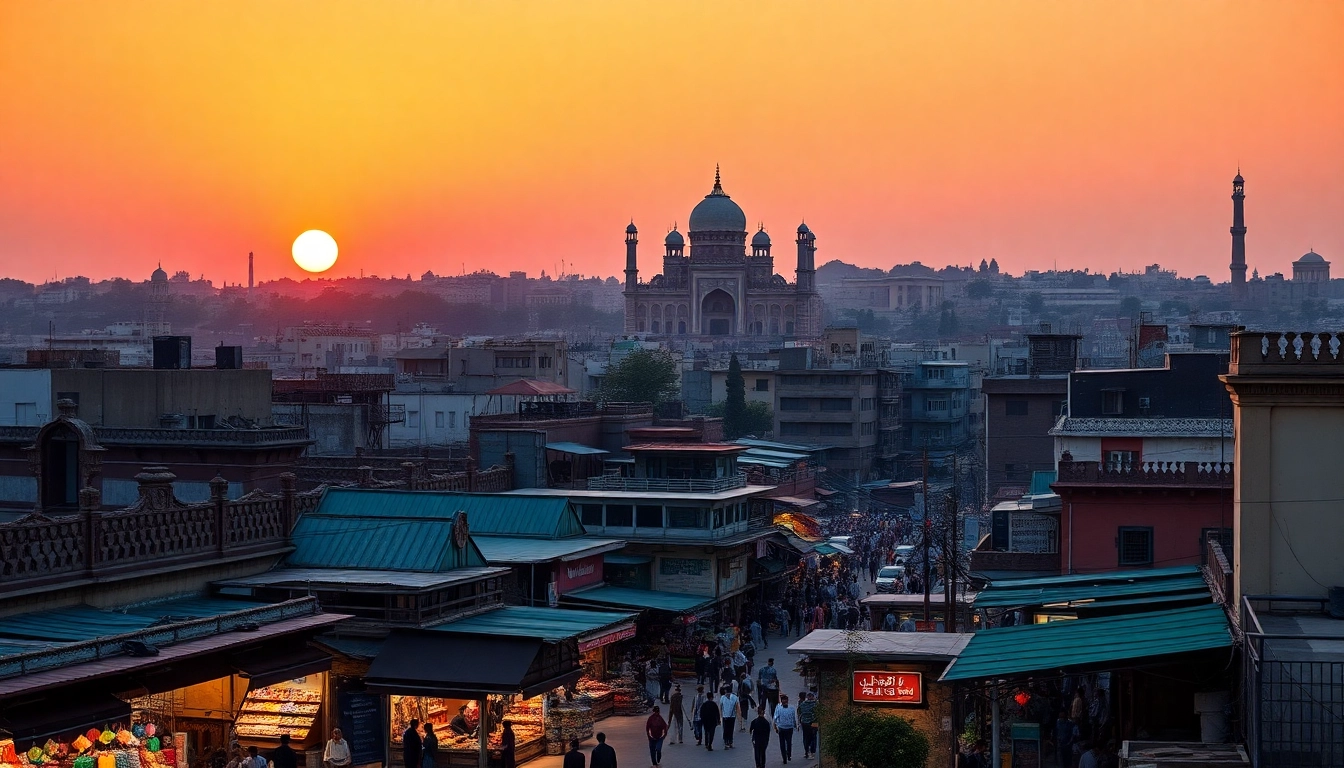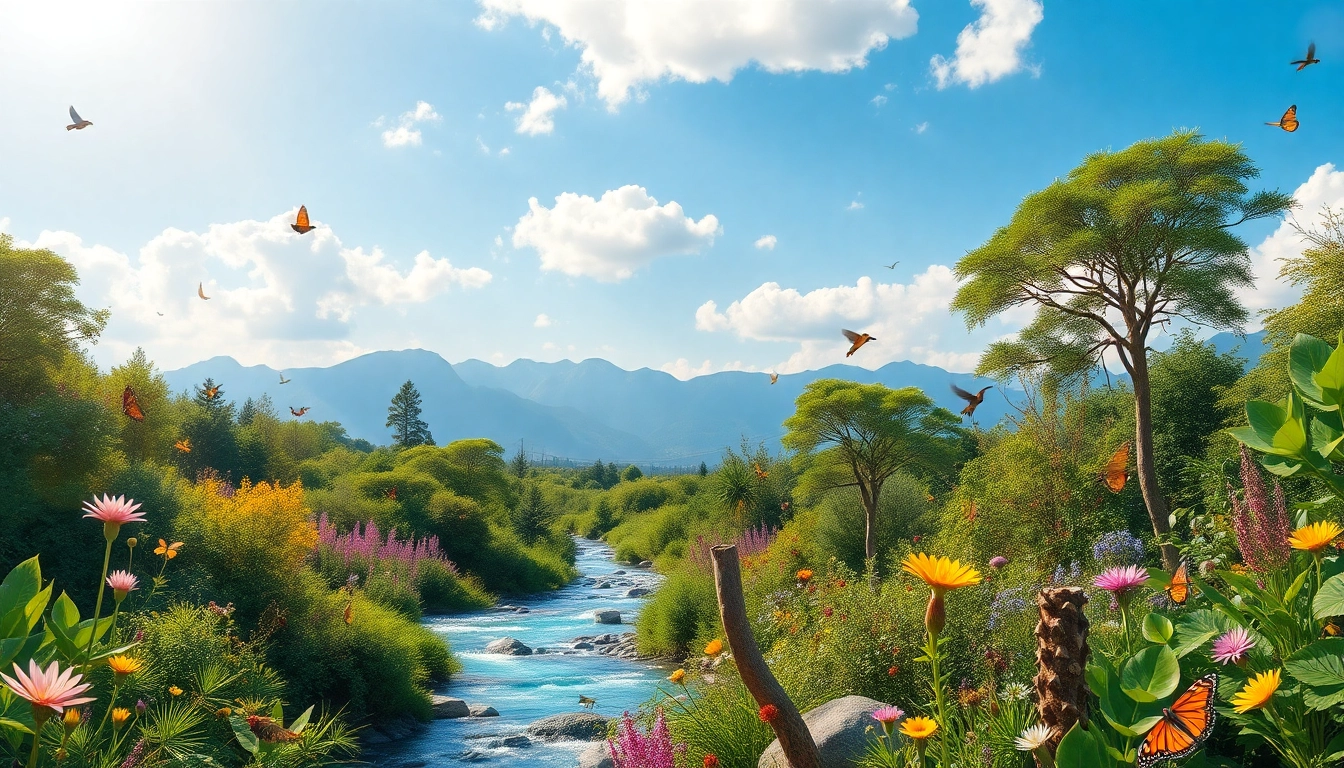Overview of Karachi: A Cultural and Economic Hub
Karachi, the bustling metropolis of Pakistan, serves as the country’s financial and cultural capital. Known for its incredible diversity, vibrant lifestyle, and rich history, Karachi is more than just a city; it is a significant hub where East meets West. This article explores various fascinating aspects of karachi, including its economic landscape, historical background, tourist attractions, transportation infrastructure, and the challenges it faces today.
The Significance of Karachi in Pakistan
Karachi is often referred to as the “Pearl of the Orient” and is the largest city in Pakistan. Its significance lies not only in its size but also in its role as a major commercial and industrial center. The city is responsible for a substantial portion of the country’s GDP and serves as a critical hub for trade and commerce due to its strategic location along the Arabian Sea.
The Karachi Port, one of the largest and busiest ports in the region, facilitates international shipping and trade, connecting Pakistan with global markets. Furthermore, Karachi is considered the birthplace of many leading industries in Pakistan, including manufacturing, textiles, and IT, making it a critical player in the national economy.
Demographics and Diversity in Karachi
With a population exceeding 20 million people, Karachi is a melting pot of cultures, ethnicities, and religions. It is home to diverse communities, including Sindhis, Punjabis, Muhajirs, Baloch, and Pashtuns, alongside various religious minorities such as Christians, Hindus, and Zoroastrians. This rich tapestry of backgrounds is reflected in the city’s festivals, cuisine, languages, and everyday life. Urdu and English are the most widely spoken languages, with many residents also conversing in their regional dialects.
This incredible diversity is a source of both strength and challenge, creating a unique atmosphere that offers various cultural experiences but also potentially leading to social and political tensions.
Economic Landscape of Karachi
The economic landscape of Karachi is multifaceted and dynamic. As the financial capital of Pakistan, it houses the Karachi Stock Exchange (KSE), the largest stock exchange in the country. The city’s economy is primarily driven by the service sector, followed closely by manufacturing and trade. Major industries include textiles, chemicals, food processing, and logistics.
Karachi’s economic vitality can also be attributed to its large workforce. The city attracts talent from all over Pakistan and abroad, which contributes to its innovation and economic growth. However, with this growth come challenges, such as a high rate of unemployment and informal labor, which need to be addressed to ensure sustainable development.
Historical Background of Karachi
Early Settlement and Development of Karachi
Karachi’s history dates back to ancient times when it was known as “Kolachi,” a small fishing village founded by local fishermen. Historically, the city served as a vital hub for trade due to its advantageous location along trade routes connecting the East and West.
The rapid growth of the city began in the early 19th century, particularly with the British colonization of India. Infrastructure development, including the construction of roads, ports, and railways, transformed Karachi from a modest fishing village into a bustling urban center.
Influence of British Colonialism on Karachi
British colonial rule significantly shaped the trajectory of Karachi’s development. As the British established it as a port city, investments in infrastructure laid the groundwork for urbanization. This period also saw the introduction of Western education and culture, leading to the emergence of a middle class that would influence various sectors, including business and politics.
Key developments such as the establishment of the Karachi Municipal Corporation in 1852 formalized the governance structure of the city, promoting urban planning and public services. The colonial legacy is still visible in Karachi’s architecture, infrastructure, and urban layout.
Post-Independence Transformations in Karachi
After gaining independence in 1947, Karachi experienced a massive influx of migrants, particularly from India. These new residents contributed to the city’s rapid growth, reshaping its cultural and demographic landscape. As a result, Karachi not only became the capital of Sindh Province but also transformed into the largest city in Pakistan.
The post-independence era also marked significant economic and social challenges. The city faced issues related to governance, infrastructure, and resource allocation as it endeavored to cater to its growing population. These challenges continue to influence Karachi’s urban policies and development plans today.
Tourist Attractions in Karachi
Must-See Historical Sites in Karachi
Karachi is steeped in history, exemplified by its many historical sites that draw both local and international tourists. Among the must-see locations are:
- Mausoleum of Muhammad Ali Jinnah: The final resting place of Pakistan’s founder, this stunning monument is a significant national symbol.
- Frere Hall: A beautiful example of Gothic Revival architecture, originally built as a town hall and now serves as a library and art gallery.
- Mohatta Palace: Once a summer residence for a wealthy businessman, this exquisite palace now serves as a museum, showcasing the rich cultural heritage of Pakistan.
Popular Entertainment Venues in Karachi
For visitors looking to experience Karachi’s vibrant life, the city offers an array of entertainment venues:
- Port Grand: A modern dining and entertainment complex overlooking the waterfront, perfect for families and tourists alike.
- Dolmen Mall Clifton: One of the largest shopping malls in the city, featuring international brands, cinemas, and restaurants.
- Burns Garden: A peaceful public park that provides a picturesque environment for relaxation and community events.
Unique Natural Landscapes around Karachi
Karachi’s geographical diversity offers several natural attractions that showcase the beauty of the region:
- Hawksbay Beach: A popular destination known for its sandy beaches where locals and tourists come to enjoy sunbathing and water sports.
- Sindh Wildlife Department’s Hawksbay: A site for the protection of marine life, including endangered species of turtles.
- Sandspit Beach: An outlet that serves as a serene escape from the city, popular for its tranquil atmosphere and scenic views.
Transportation and Accessibility in Karachi
Public Transport Infrastructure in Karachi
Karachi’s public transport system is diverse but faces challenges in efficiency and accessibility. The city’s transport infrastructure includes a mix of buses, rickshaws, and taxis, with the Karachi Circle Bus service launching to cater to commuters’ needs.
Although public transport carries millions of passengers daily, the need for modernization and expansion is essential to accommodate the ever-increasing population. Smart public transport initiatives and projects are being considered to enhance overall service and infrastructure capabilities in the coming years.
Major Highways and Road Connectivity in Karachi
Karachi boasts a network of highways and major roads that connect it to other regions of Pakistan. Major routes such as the Karachi-Hyderabad Motorway and the Super Highway facilitate the movement of goods and people, bolstering the economic landscape of the city.
Efforts to maintain and upgrade these highways are essential to address traffic congestion, improve road safety, and enhance connectivity. Continued investment in smart traffic systems is also a vital component of enhancing road efficiency.
Aviation and Karachi: Local and International Airports
Karachi is served by Jinnah International Airport, one of the busiest airports in Pakistan, providing local and international flight services. The airport functions as a key travel hub, connecting travelers to destinations worldwide.
In recent years, airport expansion projects have been initiated to accommodate growing passenger traffic and enhance service quality. As air travel becomes increasingly vital for global connectivity, Karachi’s aviation infrastructure will play a pivotal role in boosting trade, tourism, and cultural exchange.
Challenges and Future of Karachi
Urban Issues Faced by Karachi
Despite its vibrant culture and economic significance, Karachi faces numerous urban challenges that threaten its sustainability. Overpopulation, inadequate infrastructure, and a lack of urban planning contribute to serious issues such as traffic congestion, waste management, and housing shortages.
Furthermore, Karachi experiences water scarcity and irregular electricity supply, negatively impacting the quality of life for its residents. Addressing these challenges will require dedicated efforts in urban management and strategic planning.
Environmental Sustainability Efforts in Karachi
Environmental sustainability is becoming a priority in Karachi amid growing concerns about pollution and climate change. Initiatives aimed at improving waste management, preserving green spaces, and promoting public awareness are gaining traction. Sustainable practices in construction, transportation, and waste disposal are essential to enhance living conditions and protect the environment.
Collaboration among government agencies, NGOs, and the private sector is crucial to ensure the successful execution of these sustainability efforts, thus paving the way for a cleaner and greener Karachi.
Vision for Karachi’s Future Development
Looking ahead, the future development of Karachi hinges on comprehensive planning and execution of growth strategies. Efforts to revitalize the city will involve both infrastructural investments and social solutions to foster inclusivity and equity. Public-private partnerships and community engagement will play pivotal roles in shaping a sustainable vision for Karachi.
As Karachi continues to evolve, embracing innovation and inclusive practices will be essential to harness its potential fully and ensure that all residents can contribute to and benefit from the city’s growth.



